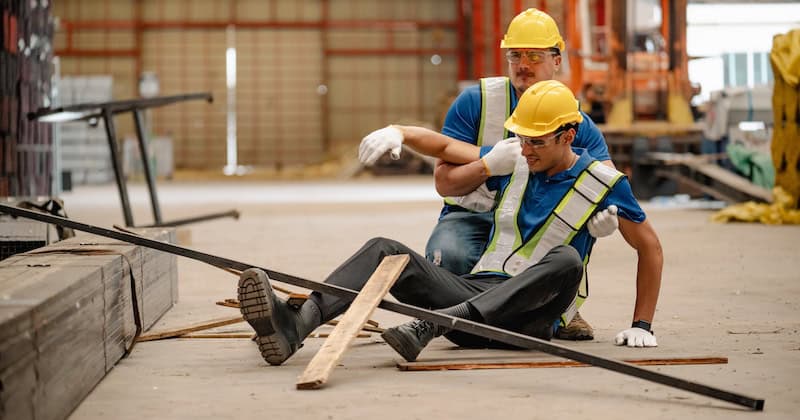Leadership’s Role In Ending Repeat Workplace Safety Violations

Last month, the Occupational Safety and Health Administration (OSHA) announced its most frequently cited workplace safety standards for fiscal year 2025, and for the 15th straight year, Fall Protection – General Requirements topped the list. Revealed during the 2025 NSC Safety Congress & Expo, the preliminary data highlights persistent compliance issues and the need for stronger safety efforts across industries.
The Top 10 most frequently cited workplace safety standards are:
- Fall Protection – General Requirements: 5,914 violations
- Hazard Communication: 2,546 violations
- Ladders: 2,405 violations
- Lockout/Tagout: 2,177 violations
- Respiratory Protection: 1,953 violations
- Fall Protection – Training Requirements: 1,907 violations
- Scaffolding: 1,905 violations
- Powered Industrial Trucks: 1,826 violations
- Personal Protective and Lifesaving Equipment – Eye and Face Protection: 1,665 violations
- Machine Guarding: 1,239 violations
“While progress has been made in many workplaces, the consistency in citation rankings year after year signals there is more work ahead,” commented Lorraine Martin, NSC CEO. “The safety community must intensify our efforts to better protect workers and save lives. We can do this through robust training, updated metrics, high-hazard identification and control implementation, coupled with employee engagement and leadership accountability.”
Repeat Safety Violations: Breaking The Cycle
Year after year, the same workplace safety violations make OSHA’s top 10 list. Facility Executive asked Duane Duhamel, Corporate HSE Director at ISN, why organizations are struggling to break this cycle, and how they can make positive change.
Facility Executive: Why do you think organizations struggle to break this cycle?
Duhamel: Fall protection, which has remained at the top of the list for several years, continues to be a concern in high-risk industries. Many of these violations occur when prevention strategies are not implemented correctly, including lack of a verified fall protection safety program and individual worker training. Improving consistency in safety practices, implementing a training program, and increasing accountability on worksites is key to helping break this cycle.
FE: From your experience, what are the biggest obstacles that prevent companies from adapting from past safety incidents?
Duhamel: There are a variety of reasons companies may struggle to adjust from past safety incidents. One is the continued growth and reliance on outsourced labor, such as contractors and subcontractors who may take on tasks that are high-risk in nature. Differences in company culture, training programs, and overall worker competency, combined with high turnover, can create inconsistencies and may increase the risk of serious injuries or fatalities. Additionally, repeat events often stem from a false sense of confidence in workplace health and safety programs and a failure to thoroughly investigate and adapt from previous incidents.
FE: How can organizations use historical injury and violation data to prevent future accidents?
Duhamel: Although past injury and violation data do not equate to future incidents, organizations need to use the information to strengthen their overall risk management process. A detailed approach to investigating injuries, near misses, inspections, observations, and audit findings, while prioritizing hazard recognition and improving safety culture, can help prevent future events.
FE: What role should leadership play in creating accountability for safety and preventing recurring violations?
Duhamel: Data shows employees model the behavior of their management teams – which is why creating a safe and healthy work environment begins with leadership. Effective leaders can help create accountability for workplace safety by fostering a “no blame” culture and supporting employees through active listening and prompt action. Leadership can also empower teams to champion safety initiatives and remain visibly present on jobsites to engage directly with the workforce.
FE: Are there specific training programs or preventive measures that have proven effective in reducing risks like falls, ladder accidents, or lockout/tagout failures?
Duhamel: There are several training programs for fall protection, ladder safety, and lockout/tagout that include an emphasis on hazard awareness and recognition through the use of the Energy Wheel. Many of the OSHA Top 10 violations are directly correlated to high energy exposure, such as gravity (falls), chemicals (hazard communication), and mechanical, electrical, or pressure (lockout/tagout). While training is an important element of risk reduction, implementing more focused, direct controls to help mitigate hazards is critical. Guardrail systems, fall arrest equipment, enclosed ladders, and machine guards are all examples of these controls.
FE: How can companies move from merely complying with safety regulations to fostering a proactive culture that prevents serious injuries and fatalities?
Duhamel: Building a safer jobsite starts with the shared expectation that everyone has the right and responsibility to stop work when something does not feel safe. Empowering crews to speak up without fear of blame can be one of the most effective ways to help prevent serious incidents before they happen. When workers feel their voices are heard, it helps lead to a stronger safety culture. Ultimately, a strong safety culture is built from the ground up, but sustains when leadership listens, responds, and leads with consistency. This proactive safety mindset cannot be mandated – it should be modeled and reinforced as part of the company’s overall culture.

